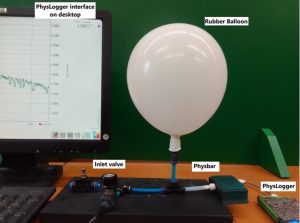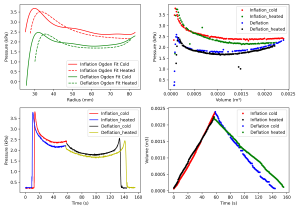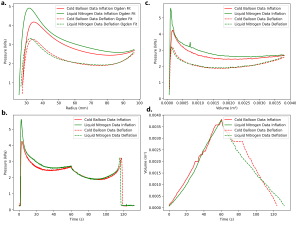| Researchers | Faisal Saeed and Muhammad Sabieh Anwar |
| Time Frame | Spring and Summer 2024 |
| Supplementary Materials | Properties of rubber balloons: a student experiment |
| Description | |
The work was funded present through a pedagogical partnership organized by the LUMS Learning Institute and was an extension of earlier investigations on balloon properties, where the home built data acquisition device now licensed to production to the Qosain Scientific, PhysLogger, and a pressure sensor, Physbar were used to capture balloon pressure versus time characteristics. This was followed by image processing techniques to determine balloon radius and the volume, as well as optical character recognition routines for digitizing pressure values.
This study aimed to (i) improve algorithm topology in determining the aforementioned parameters, and (ii) to understand the elastic behavior of balloon rubbers during inflation as well as deflation across varying environmental conditions. A series of experiments were performed, where we thermally stressed the balloon by placing it in a boiling water, submerged balloon in liquid nitrogen, which is typically at -196 °C, placed the balloon inside a freezer, and of course compared to properties under ambient conditions. We also performed cyclic inflation and deflation of the balloon to investigate the onset of fatigue. A experiment was done to determine fracture point of rubber polymer leading to the rupture. The Ogden hyper-elastic model was then applied to fit the experimental data for all A full report on this work is being written up. We also like to thank Dr. Sabieh Anwar’s MS student Hafsa Arshad for her original work on this project and to LLI for funding this. | |



